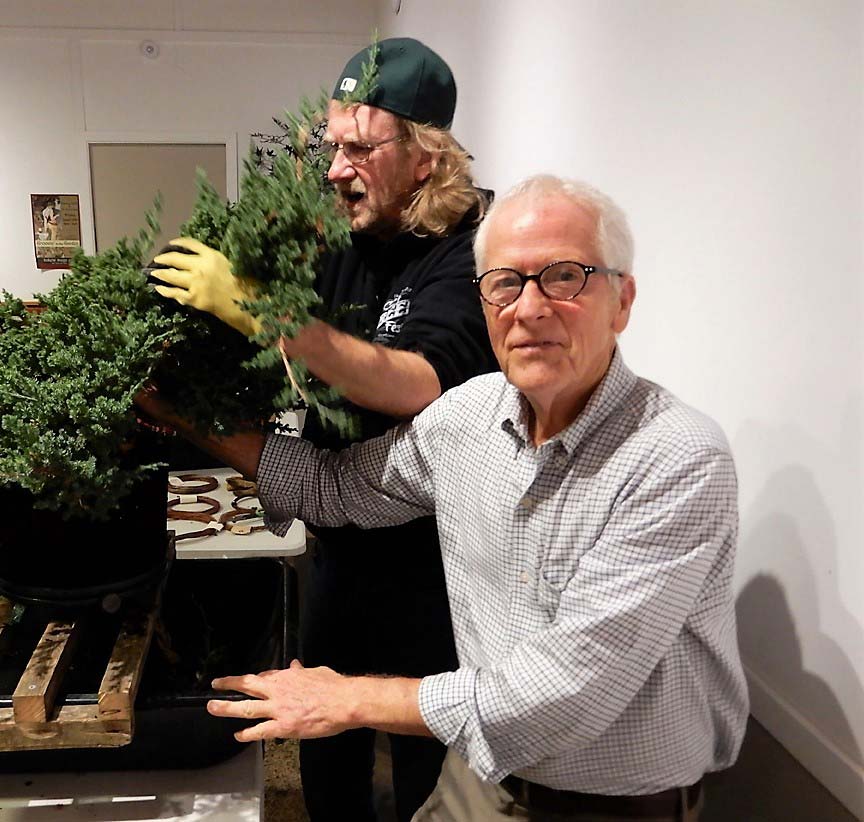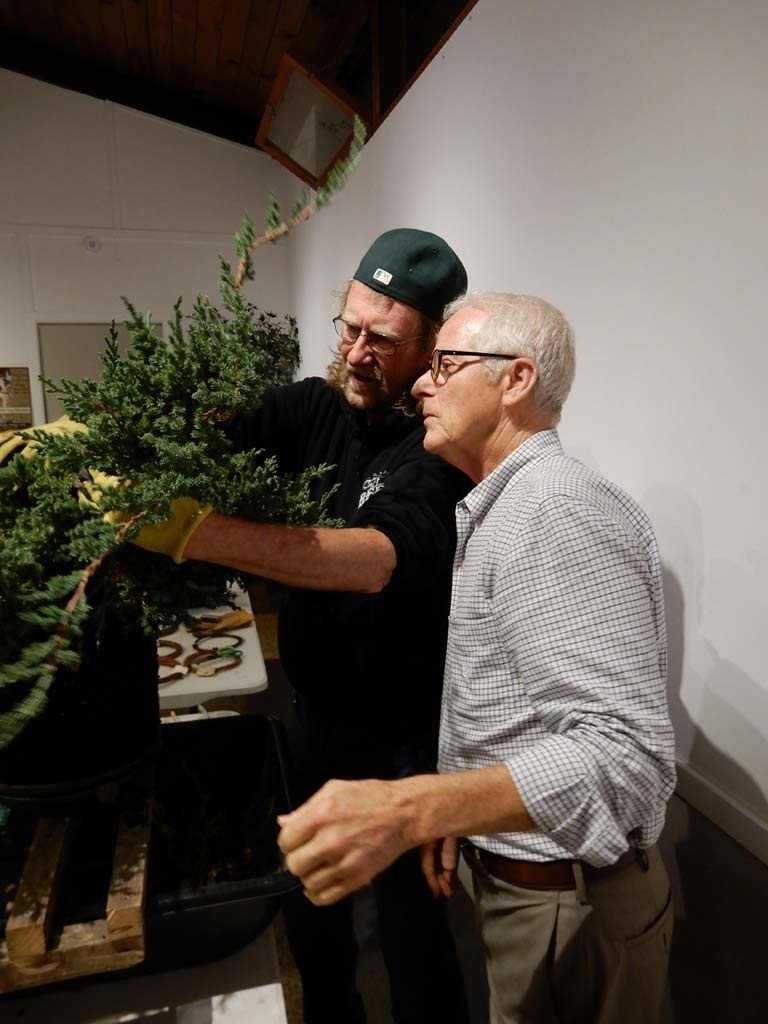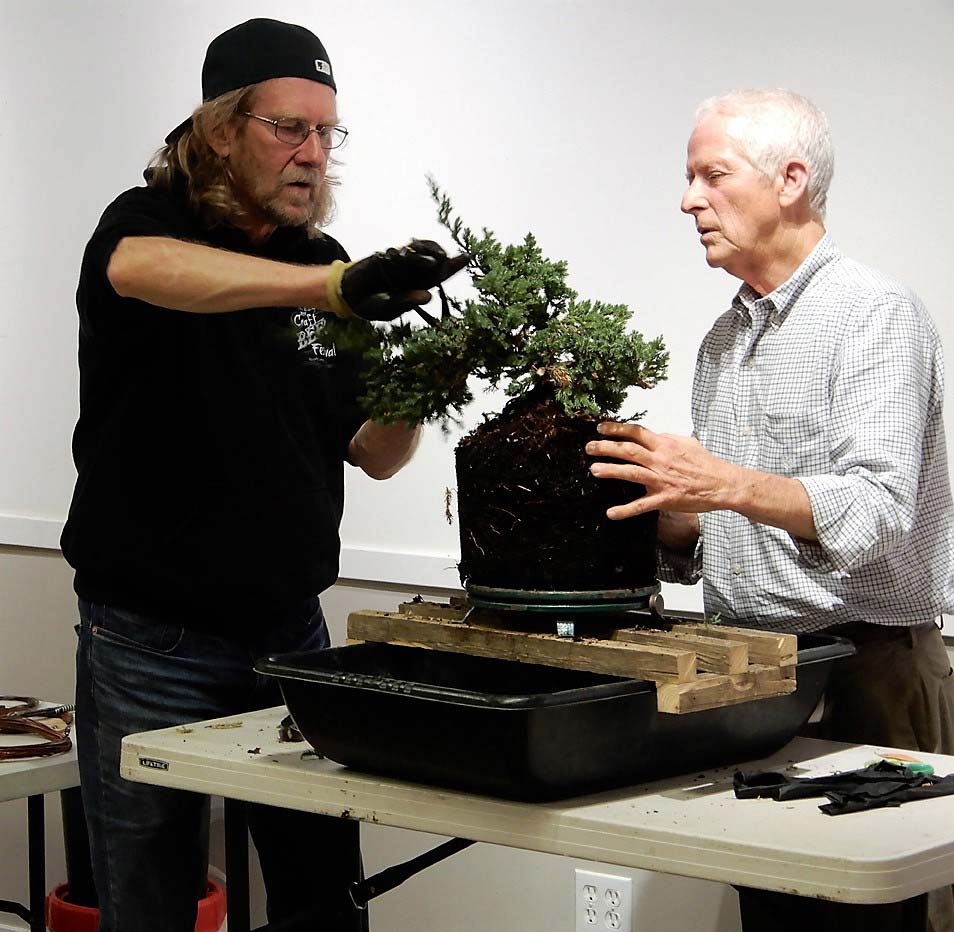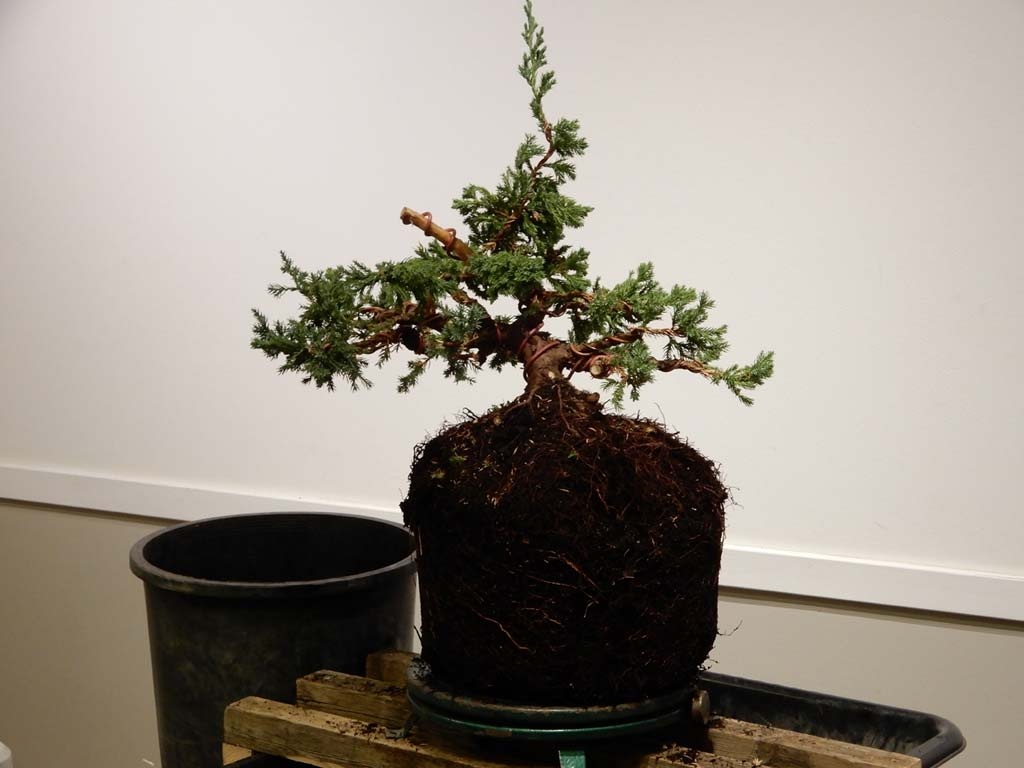Here’s another inspiring article that was turned in recently by our esteemed copywriter, David Eichhorn. We’re catching up! – Ed. 5/13/19
In October of 2018, the collected club enjoyed one of its favorite regular demonstrations: the Chris Ross and John Doig show. That is to say, Chris and John brought a pre-bonsai with them and, in the gentlest manner possible, showed us how to turn a common nursery shrub into the beginnings of a bonsai tree.

Chris opened the demonstration with a quick expression of his feeling, shared by many other members of the bonsai community these days, that demonstration bonsai can sometimes receive a little too much abuse. Except in the case of higher-level demonstrations involving expensive trees, most bonsai demos that we see take relatively cheap pre-bonsai stock, like a landscape shrub, and stress the heck out of it making it look as much like a bonsai as possible in two to three hours. Chris said that he and John would not be doing that with this tree, a nicely complex procumbens nana juniper that did indeed come from a landscaping nursery.
John, clearly the more aggressive tree-whacker of the two, was showing obvious signs of trying to contain his disappointment while fingering a sharp pair of pruning shears. Kidding aside, though John may be a slightly more aggressive tree artist than the more contemplative Chris, they both agreed upon, and demonstrated throughout the night, Chris’ ultimate point: don’t over-stress your new pre-bonsai by changing too much at once.

So with the goal in mind of turning this once-future-shrubbery into something closer to but not quite a bonsai, Chris started asking the audience for input regarding what to look for in the material that might be saved or removed to give more of a bonsai feel to the overall plant. He reminded us that a good place to start is the trunk line, which must be examined carefully even before you purchase such a plant, to make sure it will lend itself to a bonsai look. At this early stage of doing the very first bonsai-related cutting and wiring on a tree, the trunk will give clues as to what type of structure you can achieve with the tree in the future.
Considering this particular tree, Chris pointed out that the branches had previously all been bowed over when it was being groomed as a landscape plant. The temptation would be to create a cascade or semi-cascade look, but the base of the trunk and other factors made it a poor candidate for a cascade treatment, so Chris said that a bowing branch needed to be chosen to bend up and treat as a new apex for the trunk.

About this time, a member of the audience asked about choosing the front for the tree, given its importance for decision-making in the early development of any bonsai. For the time being, however, Chris said that choosing a front is a bit irrelevant, because there’s so much growth to deal with. Most of what happens with a pre-bonsai like this is cutting away the existing branches in favor of back buds and other new growth that is more pliable and, preferably, more densely foliated close to the trunk–or at least capable of becoming so. Once one is finished with that process, there typically won’t be anything left that is developed enough to dictate where the front should be. You might have some idea, but little to no certainty.

After finally setting John loose on cutting back the tree, Chris went on to explain that branches that are too long for where they are on the tree should be lopped off, or greatly reduced in favor of back growth if they’re not unreasonably thick. He said this as John selected a significant, but particularly disproportionate, branch of the juniper and completely removed it from the trunk. Remember that to give it a natural look, a bonsai’s branches should generally get shorter and definitely thinner as you go up the tree. Furthermore, Chris said, absolutely no branch on a bonsai should be longer than one-half the height of the tree. The obvious exception to that would be if that branch is being allowed to run for a season or two in order to thicken it up.
Some additional points that Chris made while John was removing unsightly branches: Being able to see through your bonsai is an important quality. It gives a sense of depth and structure to the tree. Therefore, plan for space between your eventual foliage pads, even if it’s not possible to create it right away. Also, the newly chosen apex should be left alone now and for the near future, so that it will develop thickness and become a more convincing continuation of the trunk.

With about half the foliage gone, the tree was ready for some wire. Chris and John only wanted to wire a few branches, leaving the rest of the wiring, and the stylistic decisions it might require, to the winner of the tree. Chris said that at this stage, wiring is critically important so that the branches can be spread apart, allowing all of the internal, developing growth tips to get the maximum amount of sun. Chris actually won the raffle for the tree, but gave the tree to Lake Hanyu, who was very thrilled to receive it.
– David Eichhorn
Photos by George Haas



